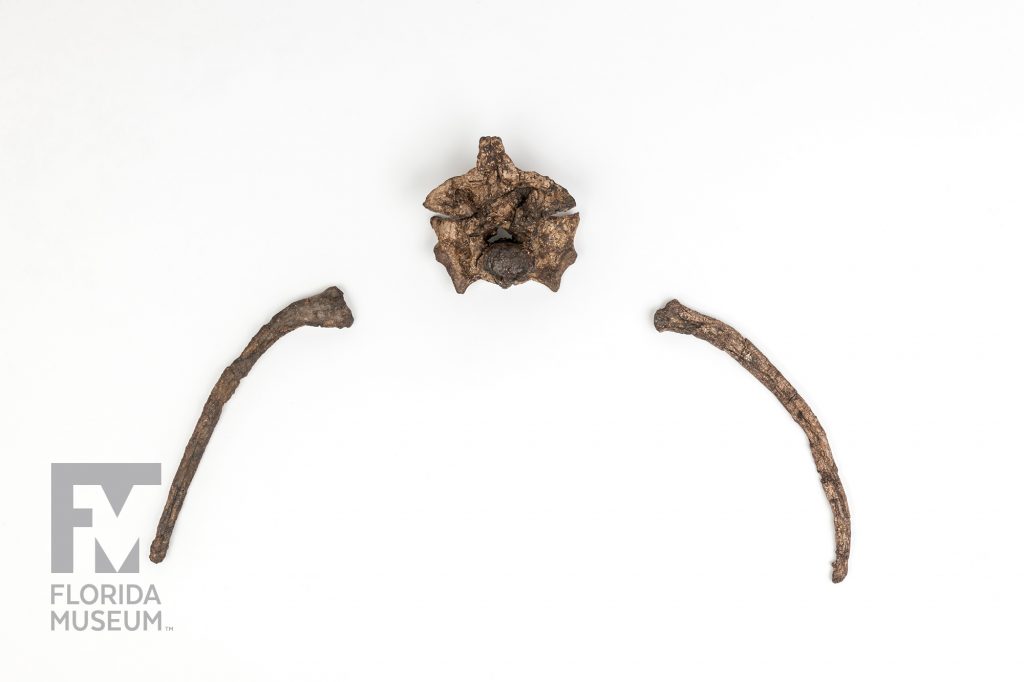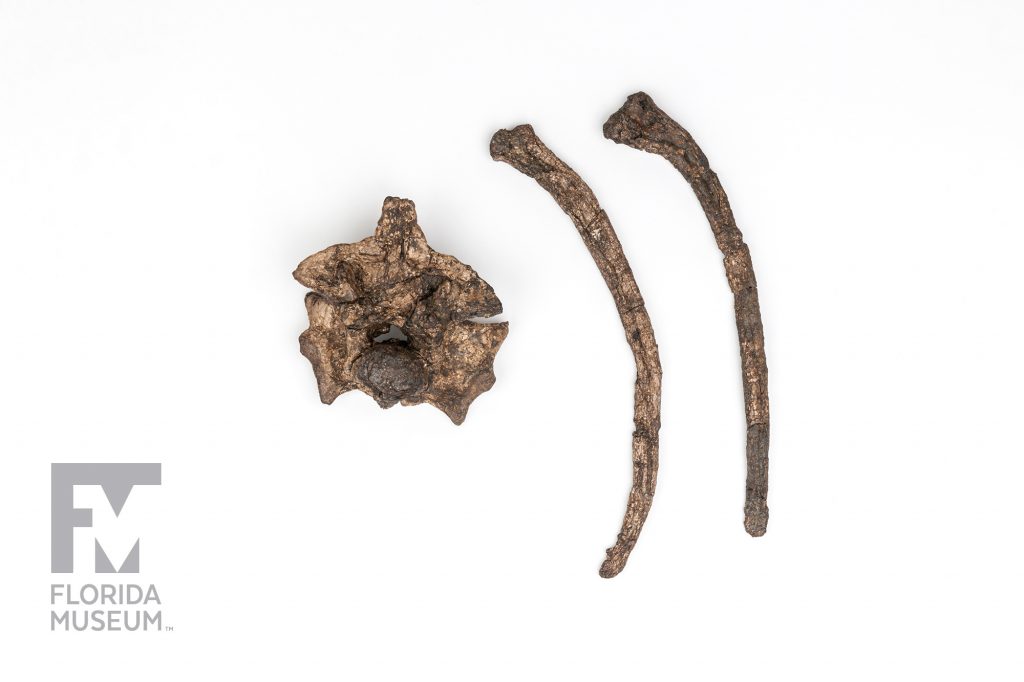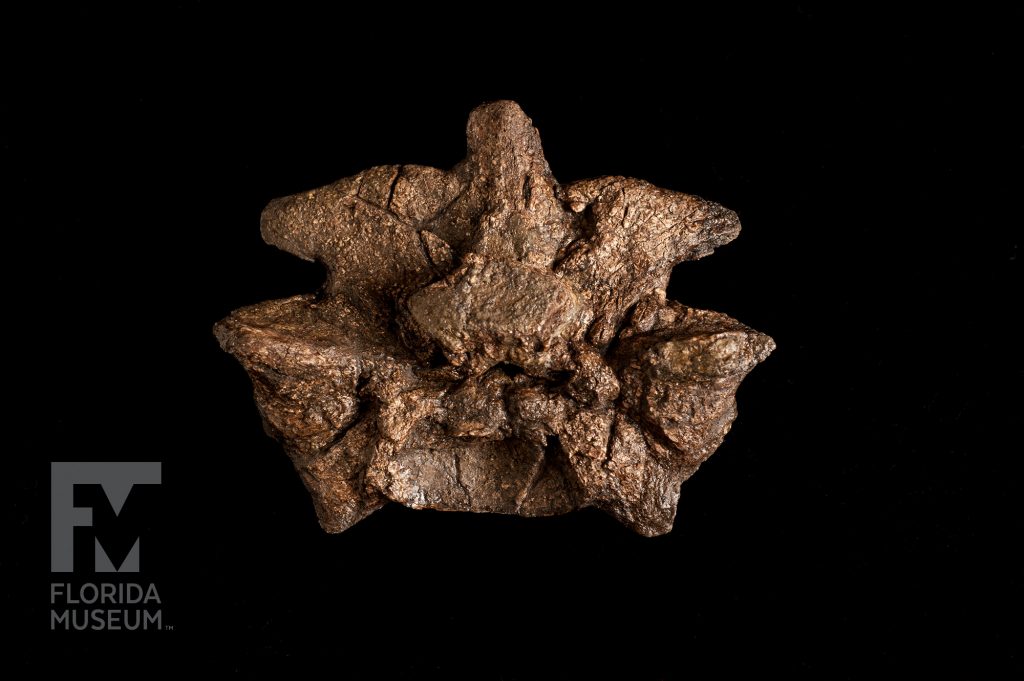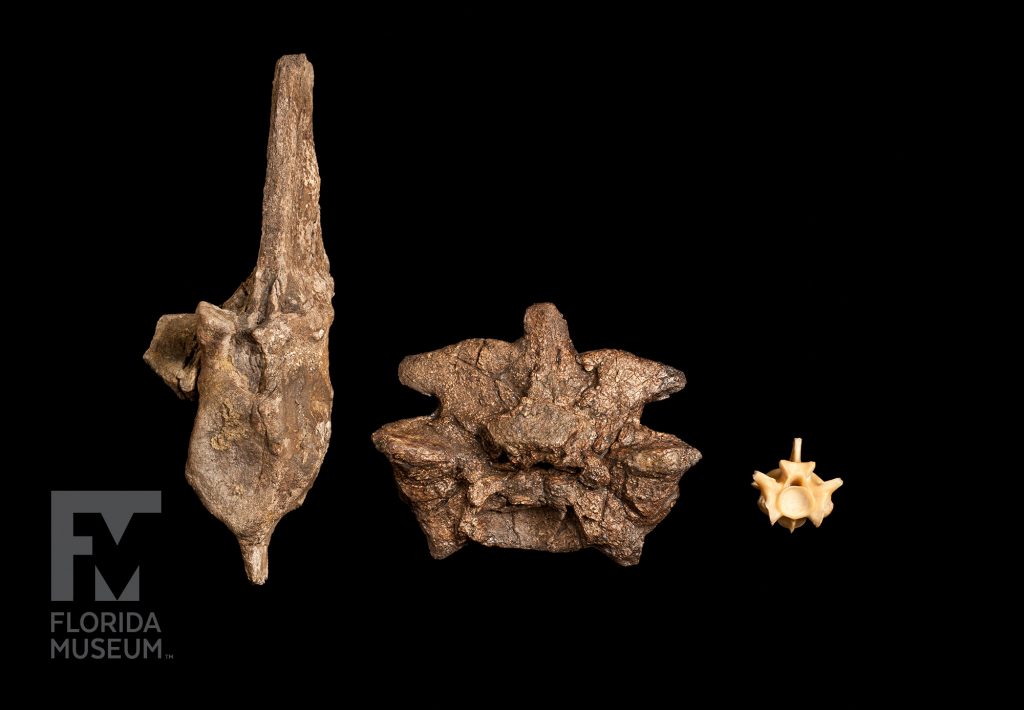Titanoboa, discovered by Museum scientists, was the largest snake that ever lived. Estimated up to 50 feet long and 3 feet wide, this snake was the top predator in the world’s first tropical rainforest. It was also the largest known predator on the planet between the extinction of dinosaurs 65 million years ago and the first appearance of Megalodon ~23 million years ago.
Summary
Titanoboa Vertebra and Ribs (Titanoboa cerrejonensis)
Compared with bones from 17 foot Anaconda
From La Guajira, Colombia
Lived ~60–58 million years ago
Collection
Story
Titanoboa cerrjonensis is the world’s largest snake, as far as we know. We estimate that it could’ve been between 45 and 50 feet long, that it could’ve been maybe 3 feet wide and would’ve weighed over a ton. And you know with all of these dimensions it can be difficult to try to imagine what that means in terms of the size of this snake. So one of the ways that I try to imagine it is that if it were to try to come in, say through your office door, it would have to squeeze through to get at you. So that provides a better image, I think. This was a truly gigantic animal and in fact, it was the largest predator that we know of on the face of the planet following the extinction of the dinosaurs.
Fossils of Titanoboa cerrjonensis were found in a coal mine in northern Colombia in tropical South America. The age of the rocks that they were found in is about 58 million years old and what was really exciting about the coal mine initially was that it preserved the ancient remnants of a rainforest. This was the oldest evidence for a rainforest that we’d had from South America. So when we started to find bones of the animals that lived in that rainforest, this was very exciting to us because literally it was like opening a window into the past; for the first time, opening that window into tropical South America a few million years after the extinction of the dinosaurs and looking to see what these animals looked like. When we open that window, one of the things we found was this absolutely gigantic snake.
The first question that we had was “Why do we not have snakes this large today in the rainforests of South America?” This snake which seems to have been related to anacondas and boas – so why don’t they get larger? And the answer to that question, we think, is that in the past 58 million years ago in South America it was also much hotter. And this is important for cold-blooded vertebrates like Titanoboa because they derive their body temperature from the ambient temperature — the temperature in their environment — as opposed to deriving their temperature from the food that they eat like a warm-blooded animals does. Because of that, cold-blooded reptiles cannot get beyond a certain body mass without their metabolism slowing so far down that they wouldn’t say, be able to eat at a certain temperature. So on the equator we have the largest snakes today and they get as large as they possibly can given the temperatures that they’re living in. The only thing that would allow us to build a larger snake would be to relax those temperatures and those temperatures would become warmer. So we think that Titanoboa became as large as it did because temperatures were maybe even as much as 10 degrees Fahrenheit warmer than they are today.
People always ask me, “Does that mean that with future global warming we’ll have larger snakes appearing on the planet?” And the answer to that is, theoretically yes, we could get larger snakes with global warming. But I also would add that while that’s true in theory, in fact, probably we won’t because one of the things that would be required to build such a large snake, even from something like an Anaconda, would be the appropriate habitat. And that’s one thing that is rapidly disappearing in various parts of the planet, especially in some of the more biodiverse places in the tropics. So the habitat might not be there. Also, the interaction with humans could certainly keep these very large snakes from reappearing. And the other thing is that the global warming that we think we will experience within the next, say 200 years, is happening so much more rapidly than the very long ramp-up towards warmer climate that was happening that probably resulted in the large body sizes that we see in Titanoboa 58 million years ago.
Jonathan Bloch
Curator, Vertebrate Paleontology*
Florida Museum of Natural History
Additional Information
Read: At 45 feet long, ‘Titanoboa’ snake ruled the Amazon
Watch: Titanoboa
Exhibit
On display Sept. 23, 2017-Jan. 7, 2018, Rare, Beautiful & Fascinating: 100 Years @FloridaMuseum celebrated the Museum’s rich history. Each Museum collection was asked to contribute its most interesting items and share the stories that make them special. Though the physical exhibit is closed, this companion website remains online, providing an opportunity to experience the Florida Museum’s most treasured specimens.
Exhibit Area: Looking Ahead
Theme: Fieldwork
 Want to see more? Explore more than 300 breathtaking color photos of plants, animals, fossils and cultural heritage materials from the Florida Museum of Natural History’s collections in the award-winning book All Things Beautiful available from the University Press of Florida.
Want to see more? Explore more than 300 breathtaking color photos of plants, animals, fossils and cultural heritage materials from the Florida Museum of Natural History’s collections in the award-winning book All Things Beautiful available from the University Press of Florida.
*This title was accurate at the time the exhibit was on display in 2017. Please visit the collection website to verify current staff and student information.



